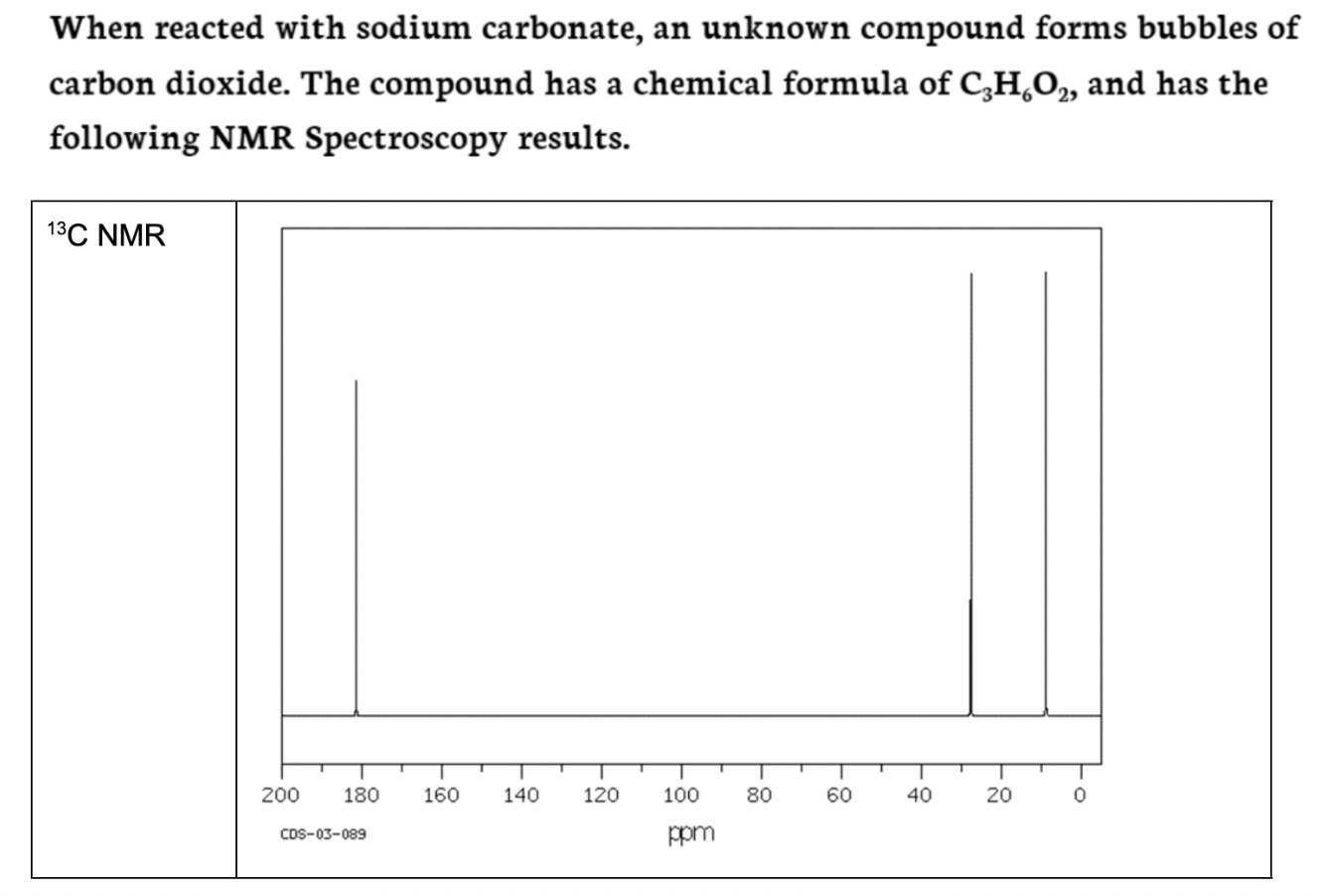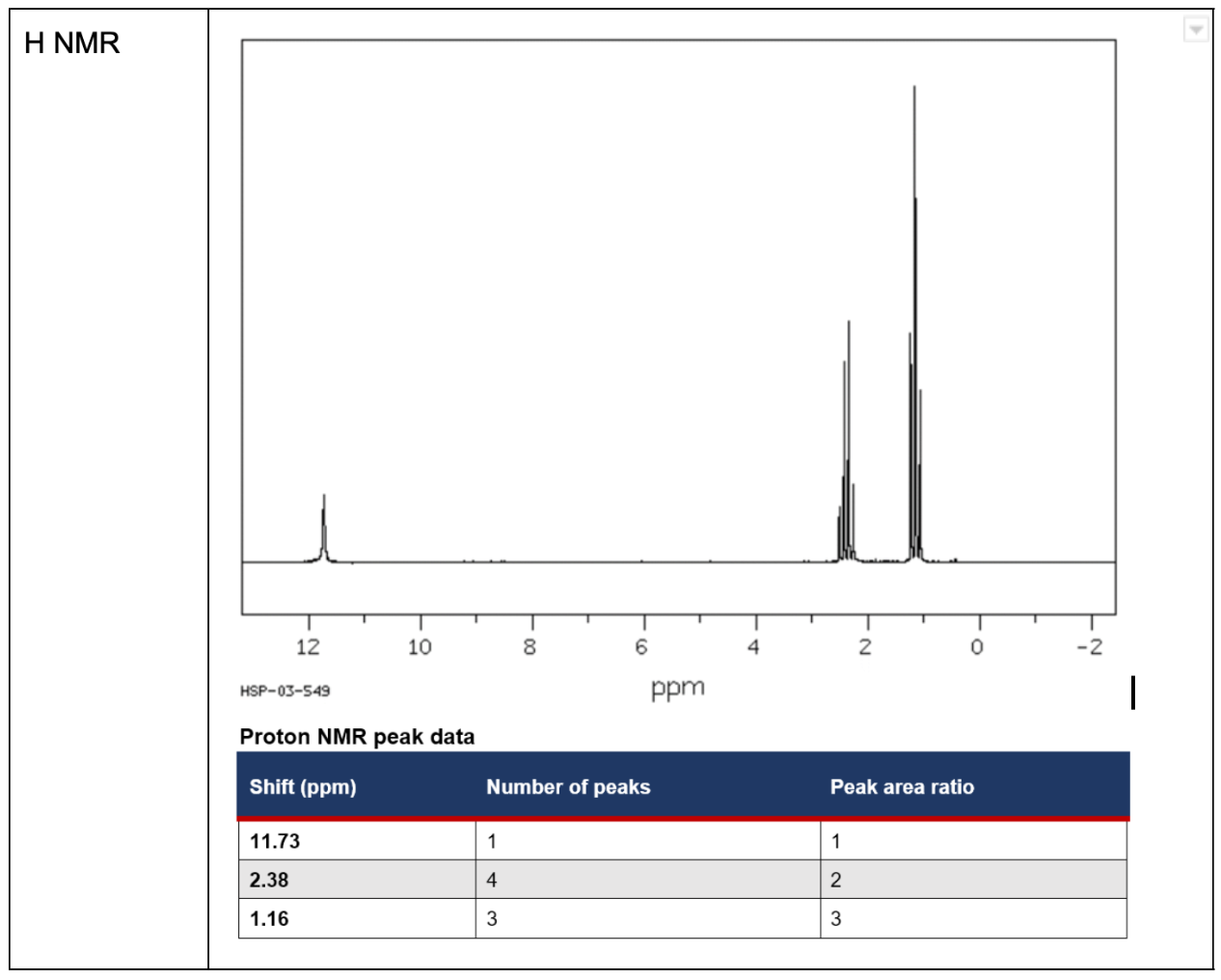Keep It Simple - NMR Spectroscopy (with sample questions and solutions!!)
NMR spectroscopy is one of the last (and biggest) learning challenges thrown your way: it’s a topic with a lot of problem-solving involved. But not to fear! Everything you need to ace NMR spectroscopy is broken down for you in an easy five-minute read (with practice questions and solutions!!)
First off, what IS NMR?
NMR (Nuclear magnetic resonance) spectroscopy is a quantitative technique that analyses the magnetic properties of nuclei in a molecule to provide information about the number and type of atoms in a molecule, as well as how they are connected (their environment).
Nuclei (with an odd atomic mass or number) have a fundamental property called nuclear/magnetic spin. Nuclei with magnetic spin can interact with and respond to magnetic fields.
Without a magnetic field, nuclei's spins are orientated randomly. When an external magnetic field is introduced, Nuclear spins shift parallel to the field either in the same or opposite direction.
- Nuclei whose spin is in the same direction as the field occupy a lower energy state,
- While the opposite direction has a higher energy state.
Nuclei in the lower energy state can move to the higher state by absorbing a radiofrequency EMR (normally radio waves). When the absorbed frequency matches the energy difference between the spin states, it flips the nuclei into a high-energy state (aligned against). Here, however, it is unstable and quickly flips back to align itself to the magnetic field. By transitioning back to a low-energy state, however, it emits energy at a specific frequency. This emission can be detected and analyzed we call this energy difference 'chemical shift'.
So to summaries, NMR spectroscopy works by detecting the chemical shifts that result from when we blast radio waves onto a sample that has been placed in the presence of a magnetic field.
But what makes chemical shifts different between nuclei?
Chemical shift is unrelated to the properties of the nucleus. Instead, it is due to electron shielding, the decrease of electron attraction to the nucleus due to the presence of other electrons.
The more shielded a nucleus is by the electrons around it, the less it will be affected by the external magnetic field, and hence less energy will be required to flip the spin state. Tip: Electronegative atoms like oxygen, nitrogen and halogens will cause high levels of deshielding.
How do we use NMR to analyse the structure of organic compounds?
We use NMR graphs of 13C and H (protons) to deduce the structure of unknown organic compounds.
Here’s a quick run-through of a question, explained with a full-mark response!


First off, unpack any information given in the description.
The compound is stated to react with sodium bicarbonate to form bubbles of CO2. We know that this is an acid + carbonate reaction and given the chemical formula is C3H6O2 it should be safe to conclude the compound must be a carboxylic acid.
Next, we consider the C NMR graph.
How do we interpret C NMR?
- Number of environments: The number of peaks indicates the number of unique carbon environments. Carbon environments describe the atoms surrounding a carbon atom. Two carbons have the same carbon environment if they are both surrounded by the same atoms.

2. Functional groups: C NMR will also show us what functional groups are detected. All you have to do is match the chemical shifts on your graph to the chemical shift data table on your data sheet.
For this question, The C NMR spectra contains three peaks. Referring to the given chemical formula of C3H6O2, this indicates that there are three unique carbon environments for three carbons and thus no symmetry.
- Referring to chemical shift data, the peak at ~180ppm corresponds to a carbon environment with a ketone/acid group. The compound is a carboxylic acid, and this environment can be deduced to correspond to COOH.
- The remaining C2H5 in the chemical formula indicates there are no other functional groups in the compound, The peak at ~25ppm and ~10ppm are significantly lower chemical shifts and point towards carbons on a hydrocarbon chain, with corresponding increasing distance from the deshielding acid group.
The above observations point towards the compound being propanoic acid, which has a COOH group and a hydrocarbon chain of C2H5.
What information can we deduce from Proton NMR?
- Number of environments: Like 13C NMR, the number of peaks indicates the number of unique proton (hydrogen) environments and any symmetry.
- Number of protons in each environment: The relative peak area (sometimes referred to as the integral number) corresponds to the number of hydrogens in each environment. So if I am told the area under the peak is 4 that means there is four hydrogens in this specific hydrogen environment.
- Number of protons in neighbouring environments: The number of sub-peaks in a big peak (known as peak splitting ) tells us the number of protons in environments that are neighboring that environment (does not tell us about that actual environment). We apply the n+1 rule here: ‘n’ is the number of neighboring protons, n+1 is the number of peaks. If I see three peaks, that means the proton environments surrounding this proton environment will have two peaks. Note: Protons in hydroxyl groups are separated from neighboring environments and only have 1 peak.
- Functional groups can be determined if you are given chemical shift data. Even without a data table, we know that high chemical shift is related to deshielding, so peaks at 8+ppm are usually due to adjacent oxygens/nitrogens/halogens.
The proton NMR has three peaks, indicating three unique environments. From the C NMR, we know the compound is formed from a COOH group and a hydrocarbon chain with C2H5.
- The peak at 11.73 correlates to a very deshielded proton, which can only coincide with COOH. The peak area ratio affirms there is 1 proton in the environment, whilst the splitting pattern of 1 affirms that the proton is on the hydroxyl of the acid group.
- The peak at 2.38 has the next highest chemical shift value so it likely corresponds to the proton environment adjacent to the deshielding force of the acid group. A peak area ratio of 2 indicates a CH2 environment, which affirms the hypothesis of propanoic acid. It has a quartet splitting pattern, indicating the environment is adjacent to a 4-1=3 hydrogen environment.’
- The peak at 1.16 has the lowest chemical shift value and thus corresponds to a CH3 terminal hydrogen environment, furthest from the deshielding acid group. The peak area ratio of 3 affirms that this is the 3 hydrogen environment adjacent to the CH2. The triplet splitting pattern indicates 3-1=2 adjacent protons, which coincide with CH2.
The above observations confirm the hypothesis that the unknown compound is propanoic acid.
And that’s it! All you need to tackle every NMR spectroscopy question in the HSC.
The best way to get full marks in NMR questions is to work out the compound, then begin writing your explanation in a concise, structured manner that clearly explains how you deduced your selected compound. Make use of diagrams, paragraphs and dot points!
Want more personalized tips to drastically improve your chemistry mark? A private tutor can make the biggest difference!
Written by KIS Academics Tutor for NSW Chemistry, Angela Wang. Angela is currently pursuing a Bachelor of Medical Studies/Doctor of Medicine at UNSW and loves helping students reach their academic goals! You can view Angela’s profile here and request her as a tutor.






